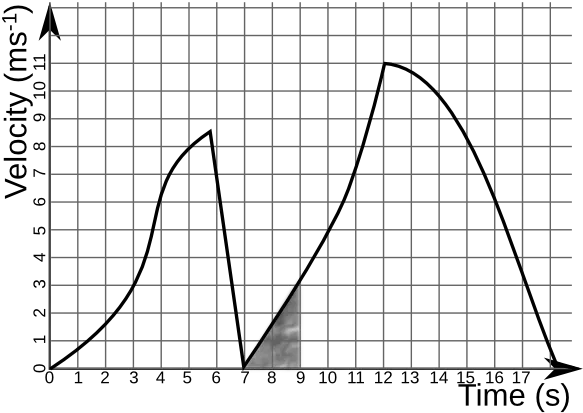A joule is a standard unit of energy throughout science. It is an SI representing force over a distance.

What is force?
Unit for force: Kg m/s^2
A force is a term used to signify a mass that has been accelerated.
- Velocity: Velocity is a term used to describe the time it takes to travel a certain distance. If you traveled 1 meter(m) over a time of 1 second(s), it is shown in equations with 1m/s.

- Acceleration: Acceleration is what is used to describe the change in velocity over time. Suppose that you are moving 1m/s, and you then accelerate to for 1 second, then coming a constant velocity of 2m/s, what is your acceleration?
acceleration: α = ΔV/ΔT
ΔV = change in velocity
ΔT = change in time
α = acceleration
To find the change in velocity simply take the initial velocity and subtract it from the final velocity. I this case, 2m/s - 1m/s = 1 m/s. With an acceleration time of 1 second and the change in velocity, you can plug in the numbers into the equation above and find the acceleration.
α = 1m/s / 1s
α = 1m/s^2
Note: s^2 basically means meters per second per second. To better understand this we can make a graph with the velocity on the y-axis and the time on the x-axis. The accelerationwould be the slope(rise(y) / run(x), so (m/s)/s giving m/s^2

Now that we know what velocity and acceleration, we can find out what a force is. A force is the mass of an object multiplied by the acceleration of the object and is signified by kg m/s^2 and is called a newton for short, after the famous father of calculus Sir Issac Newton.
F = mα
F = force
m = mass (in kg)
α = acceleration
Lets just say that the mass of the object we are talking about is 1 kilogram. We can plug in the numbers that we came up with before and find the force.
F = 1kg x 1m/s^2
F = 1kg m/s^2
Joule:
A joule is a measure of the force over a distance and is signified by kg m2/s2. Imagine it like if you were pushing a box 1 meter and it took 1 newton to push that box. You would be able to find the amount of joules by using the following equation:
J = FΔ X
ΔX = change in distance (m)
F = force (kg m/s^2)
J = joule (kg m2/s2)
Using the information above we can plug in the numbers and find the amount of joules.
J = 1N x 1m
J = 1J (kg m2/s2)
Thank you for reading this article, I hope to bring more informative articles spreading knowledge and getting into ever more complicated topics.
Sources:
upload.wikimedia.org/wikipedia/commons/a/ae/Velocity-time_graph_example.png
c2.staticflickr.com/8/7063/6800673214_5f3b062c65_b.jpg